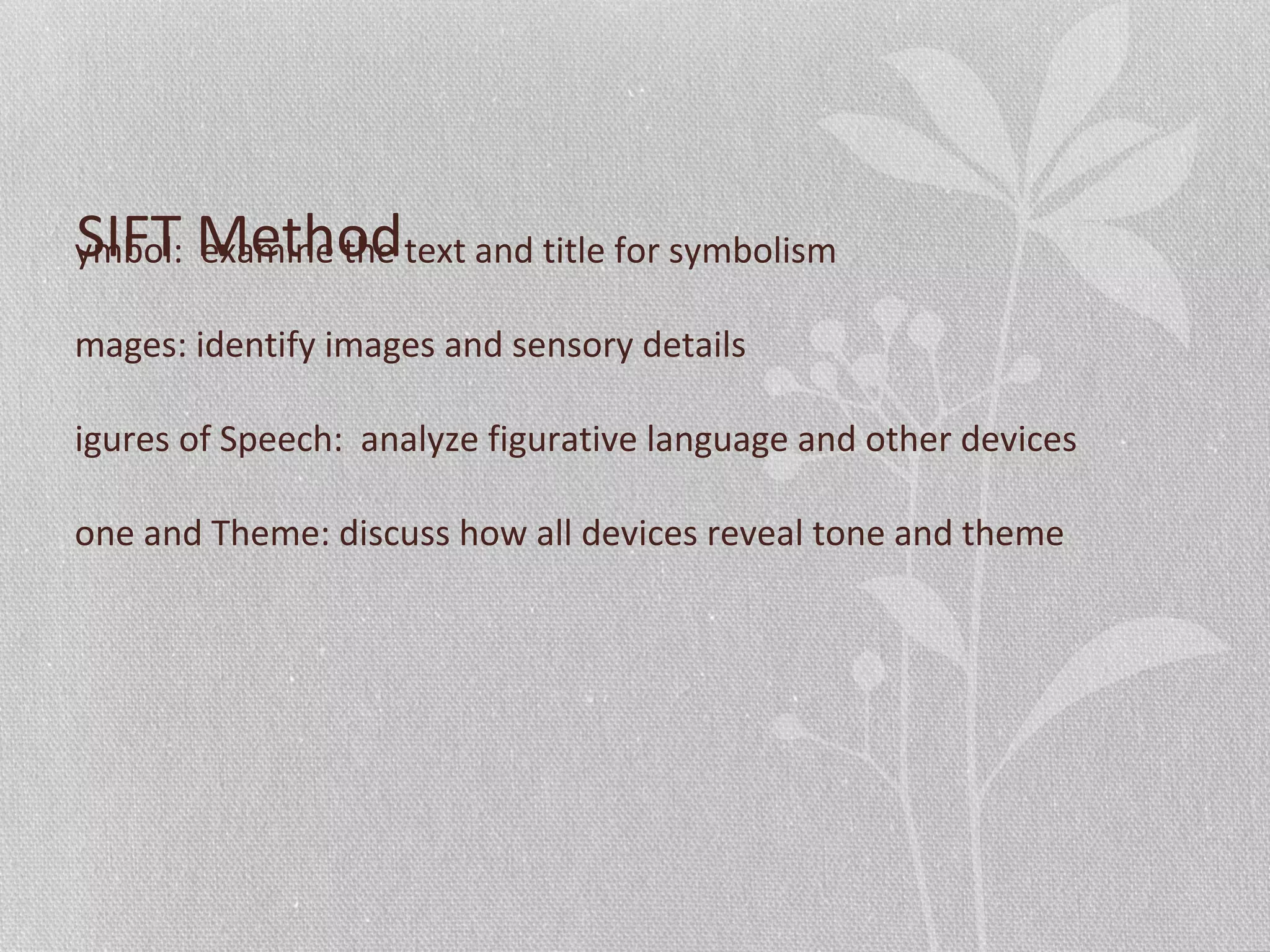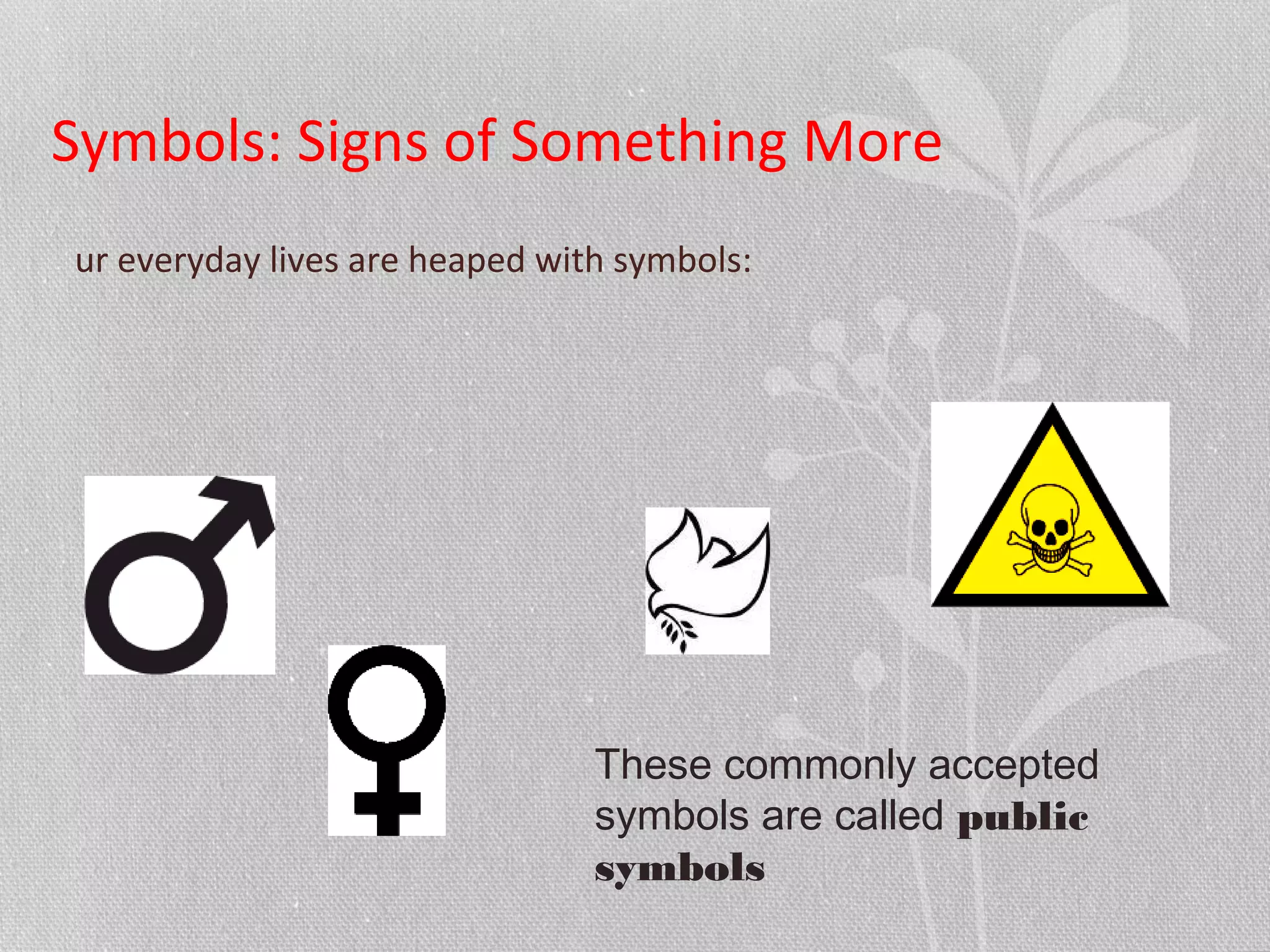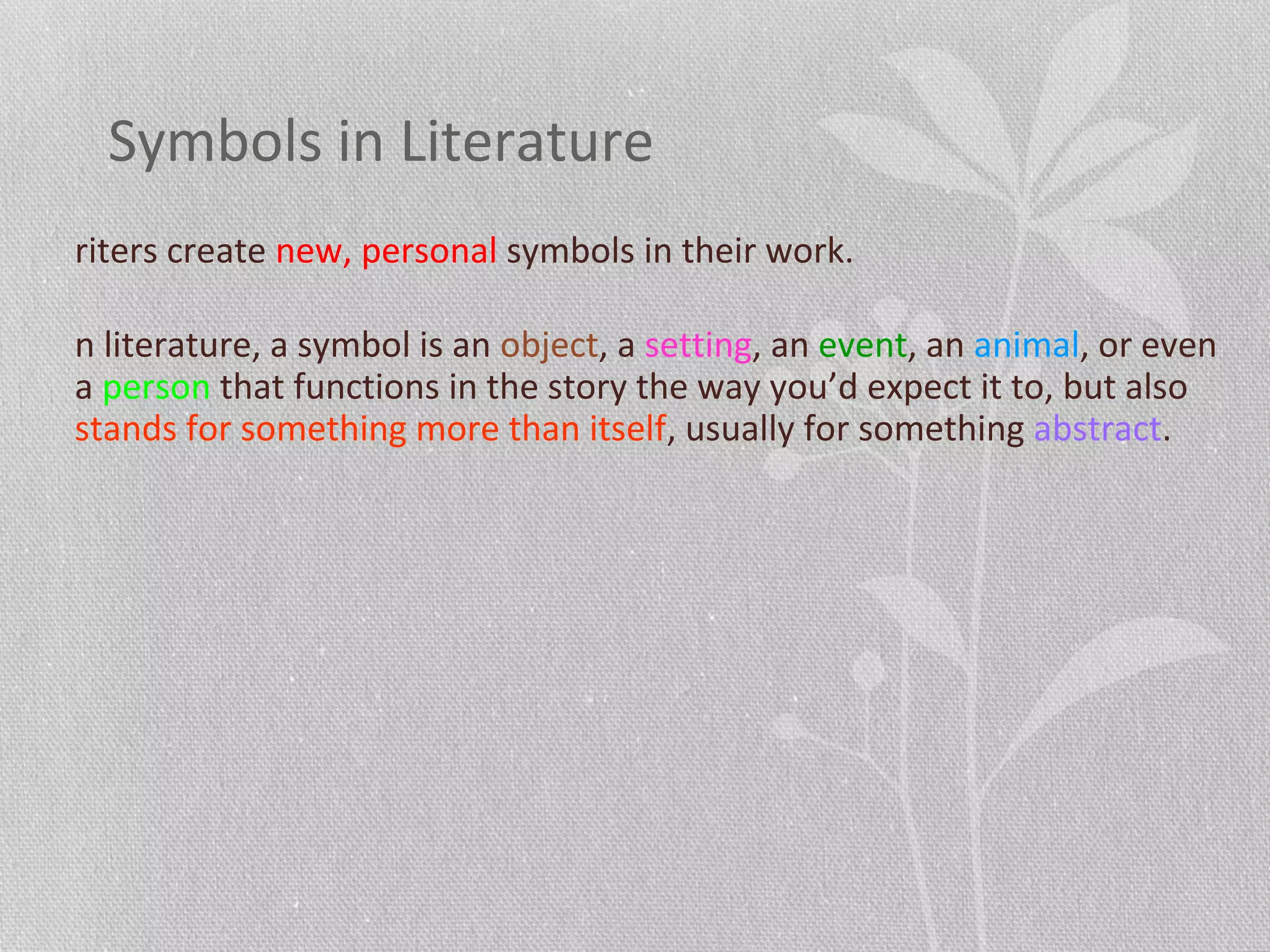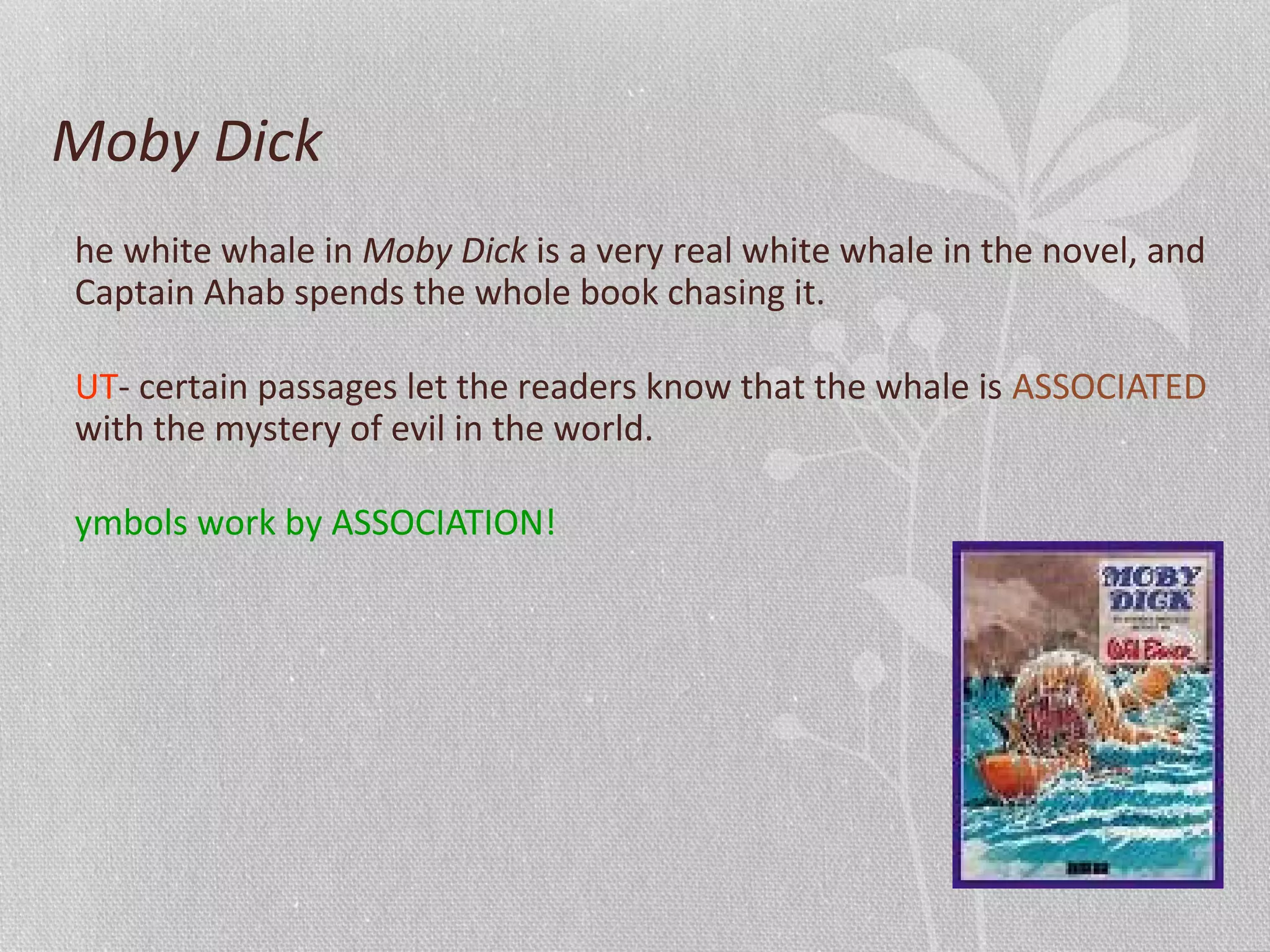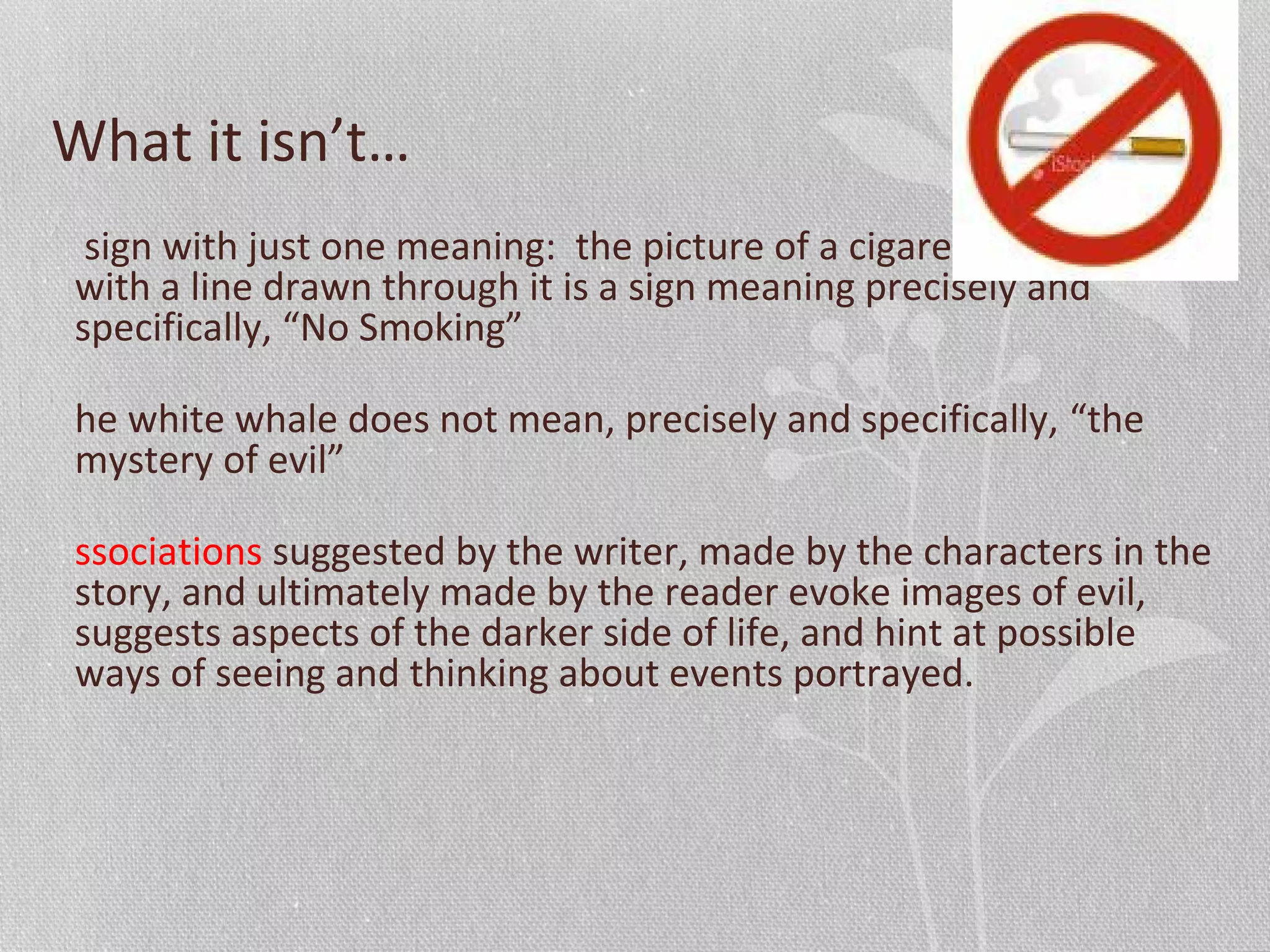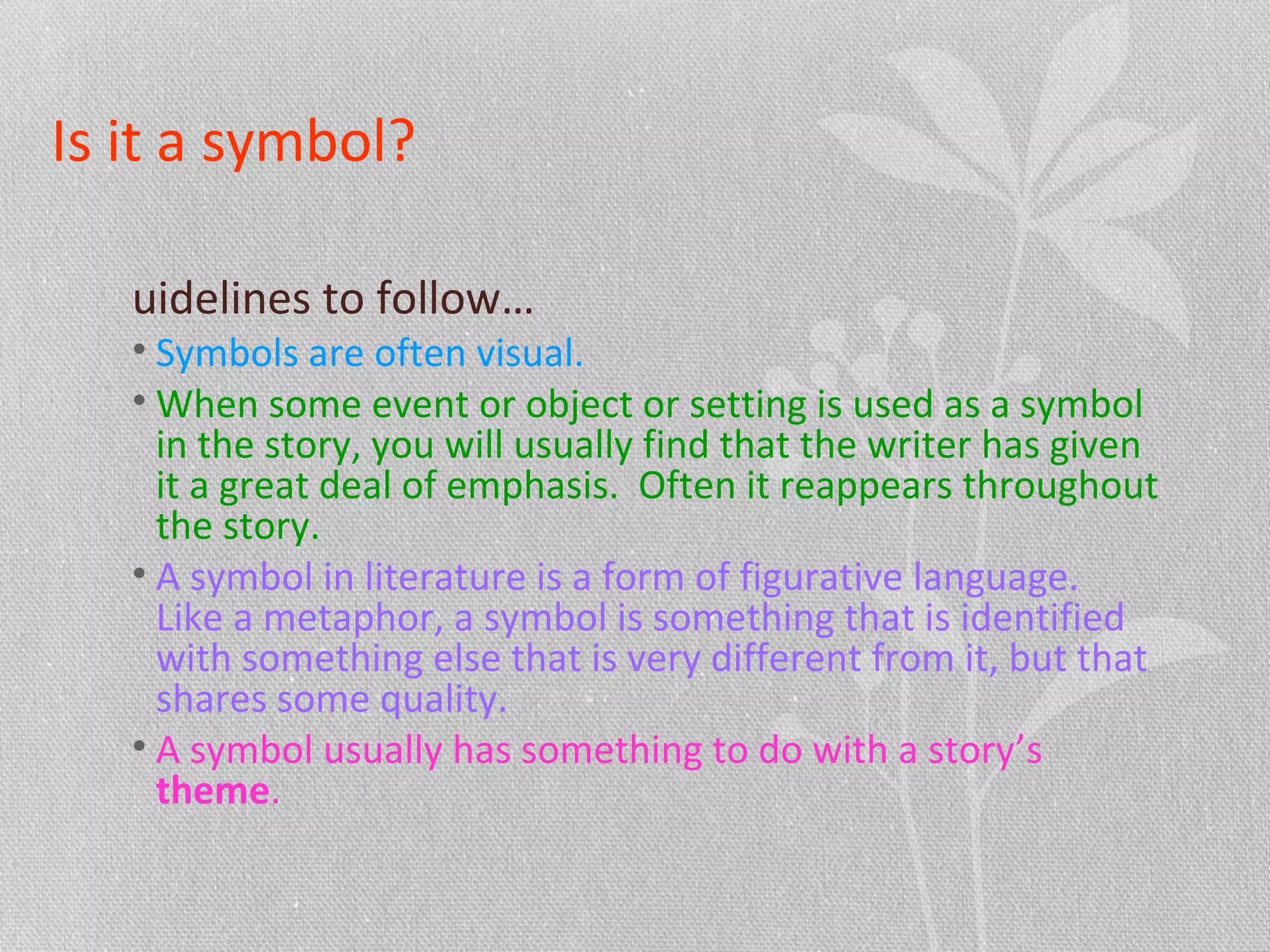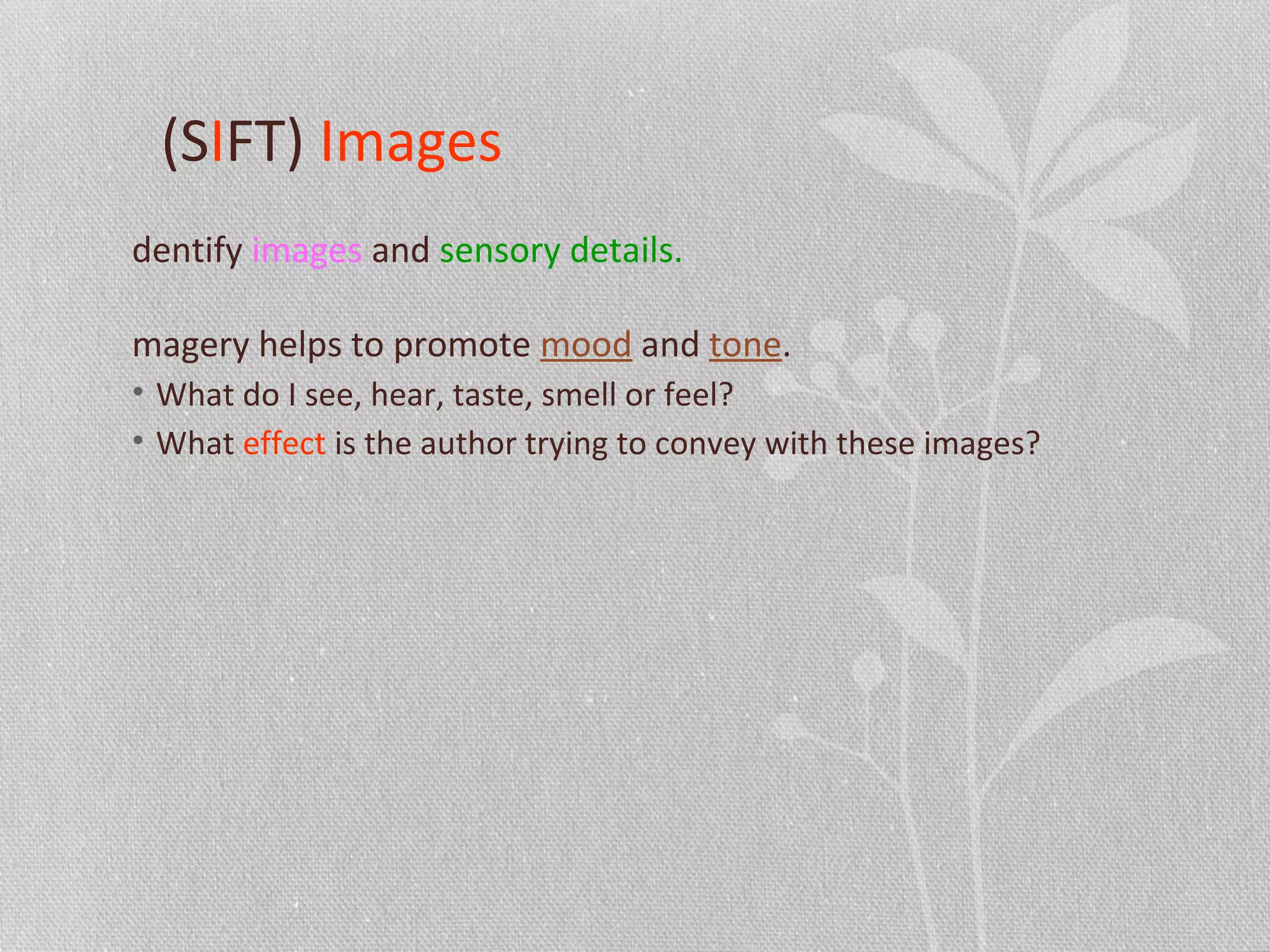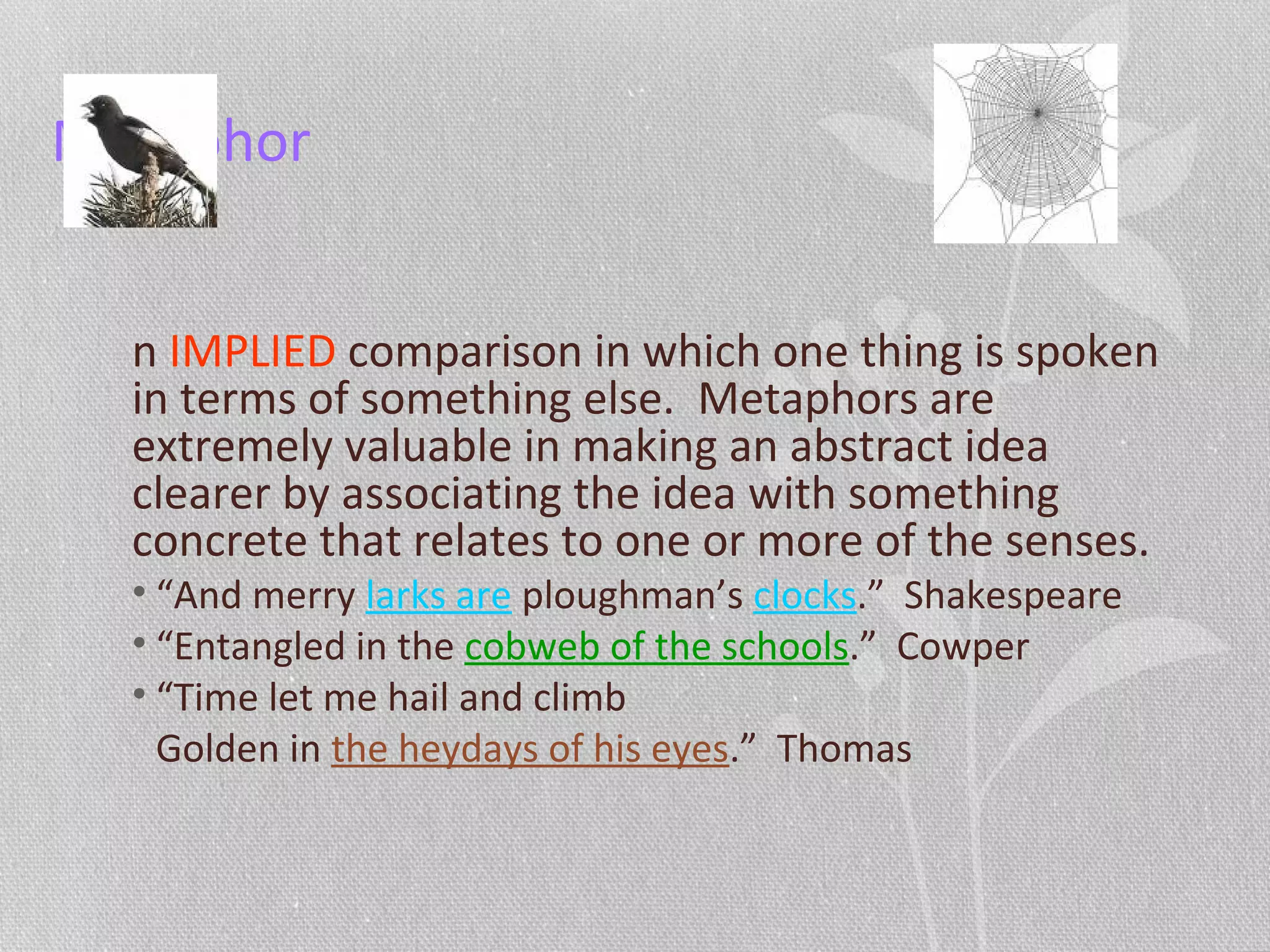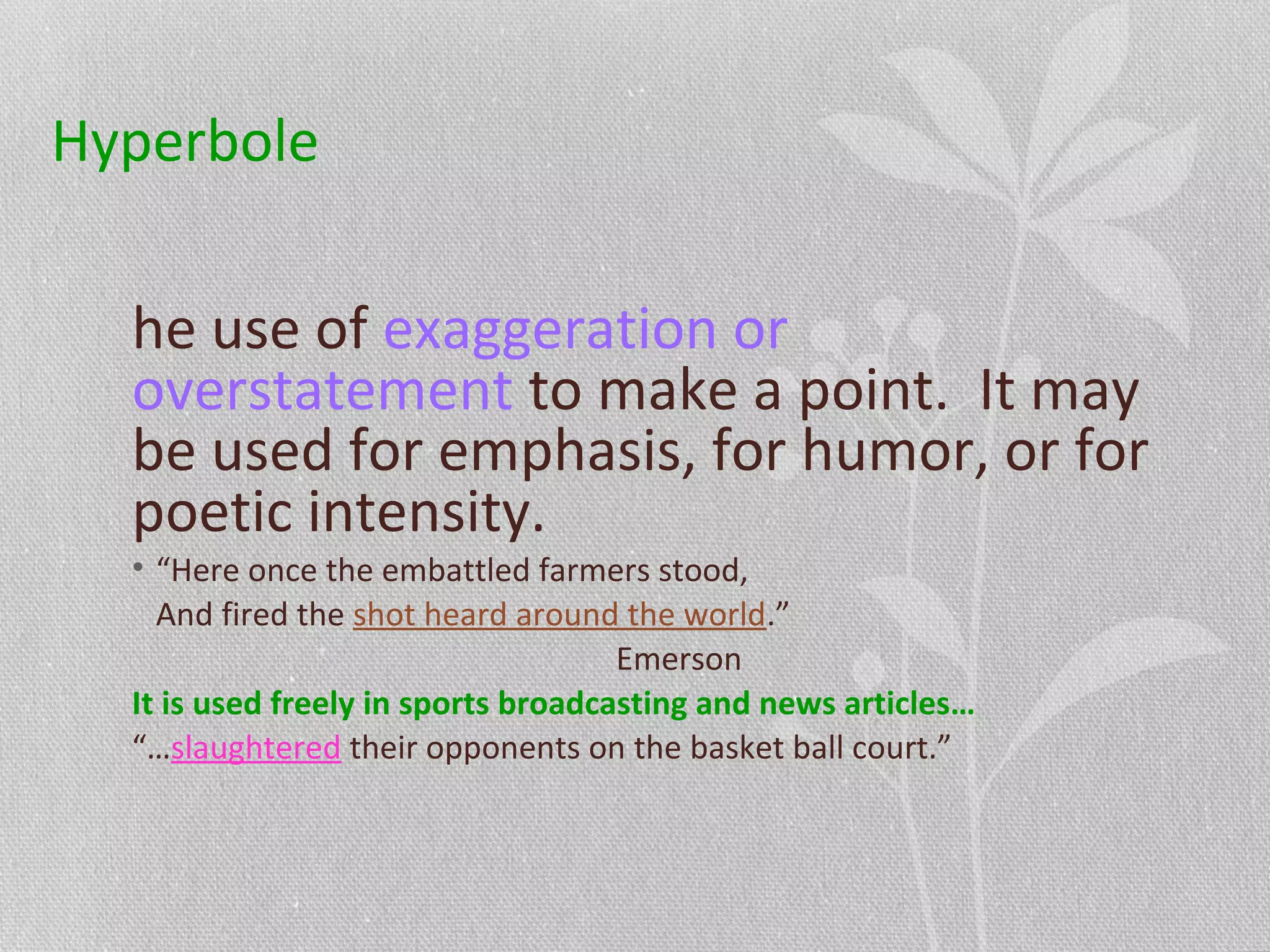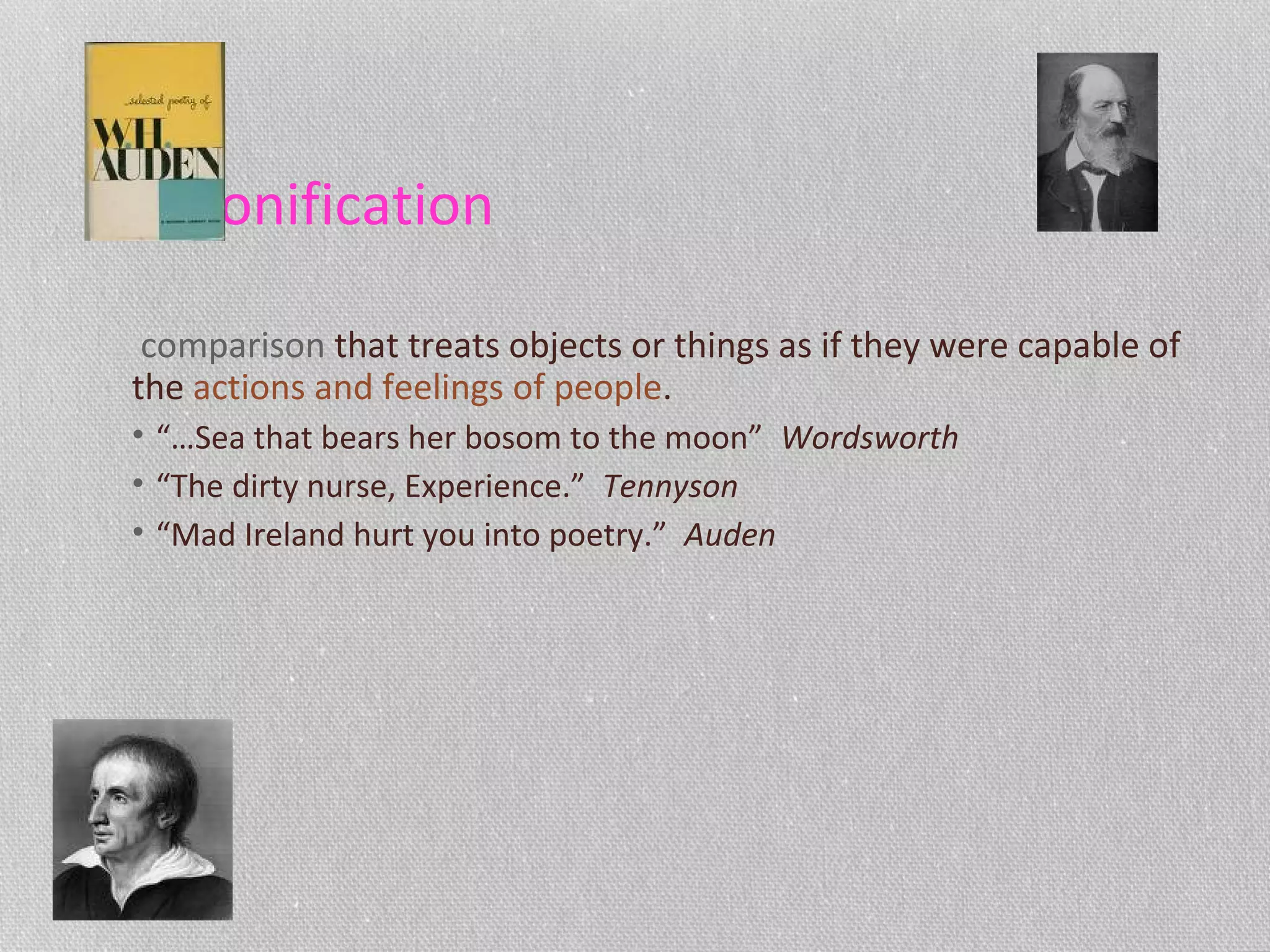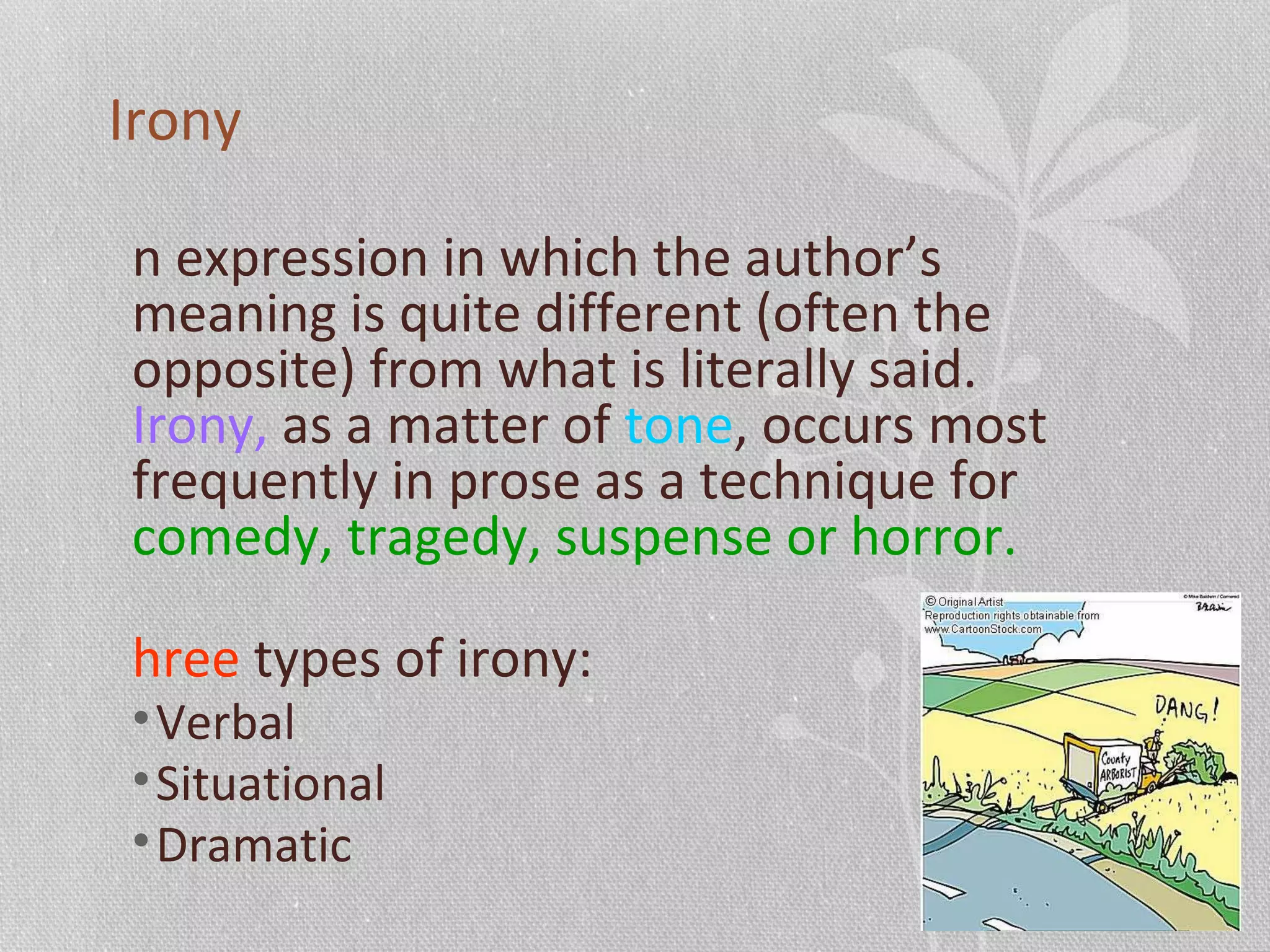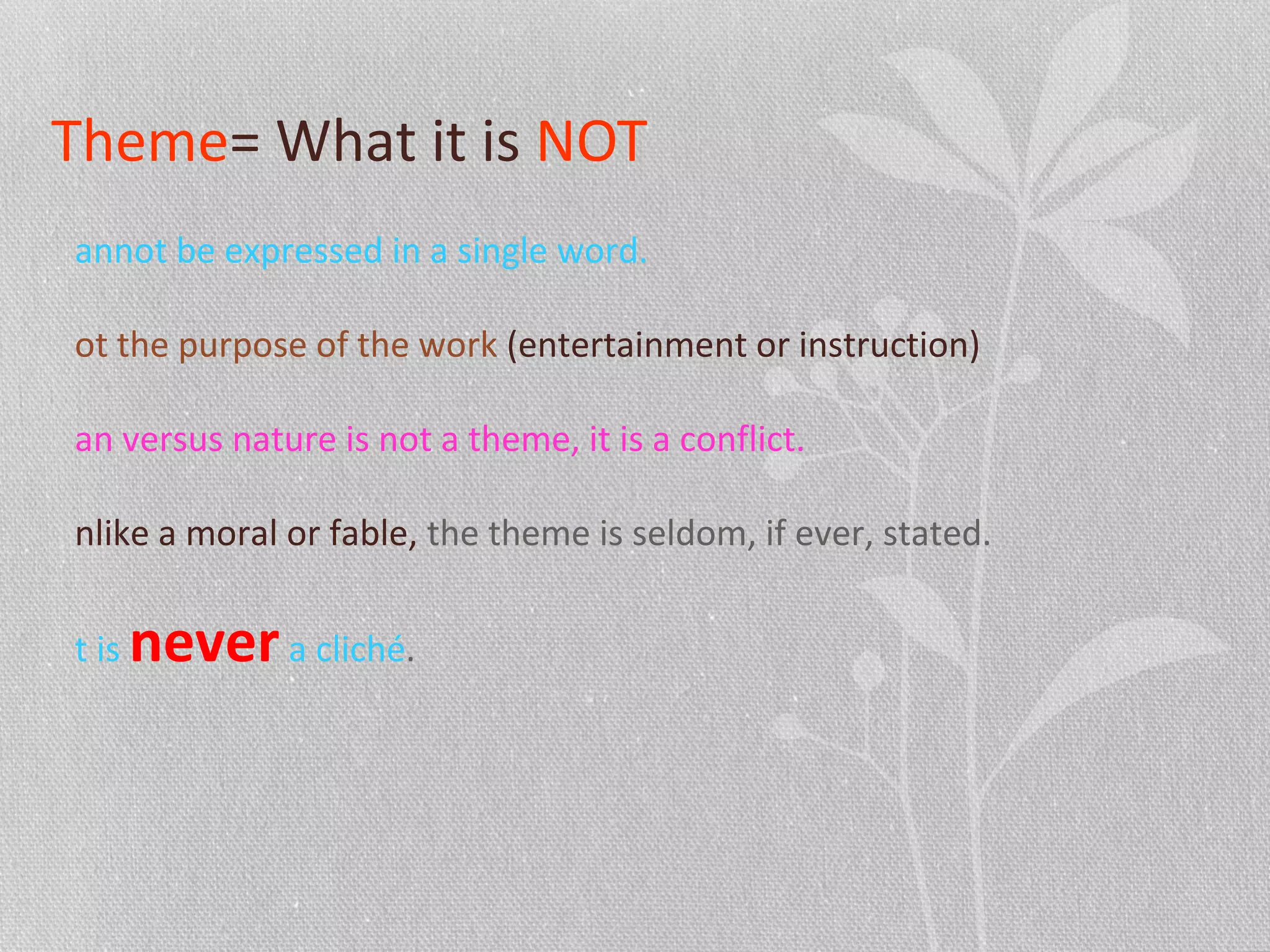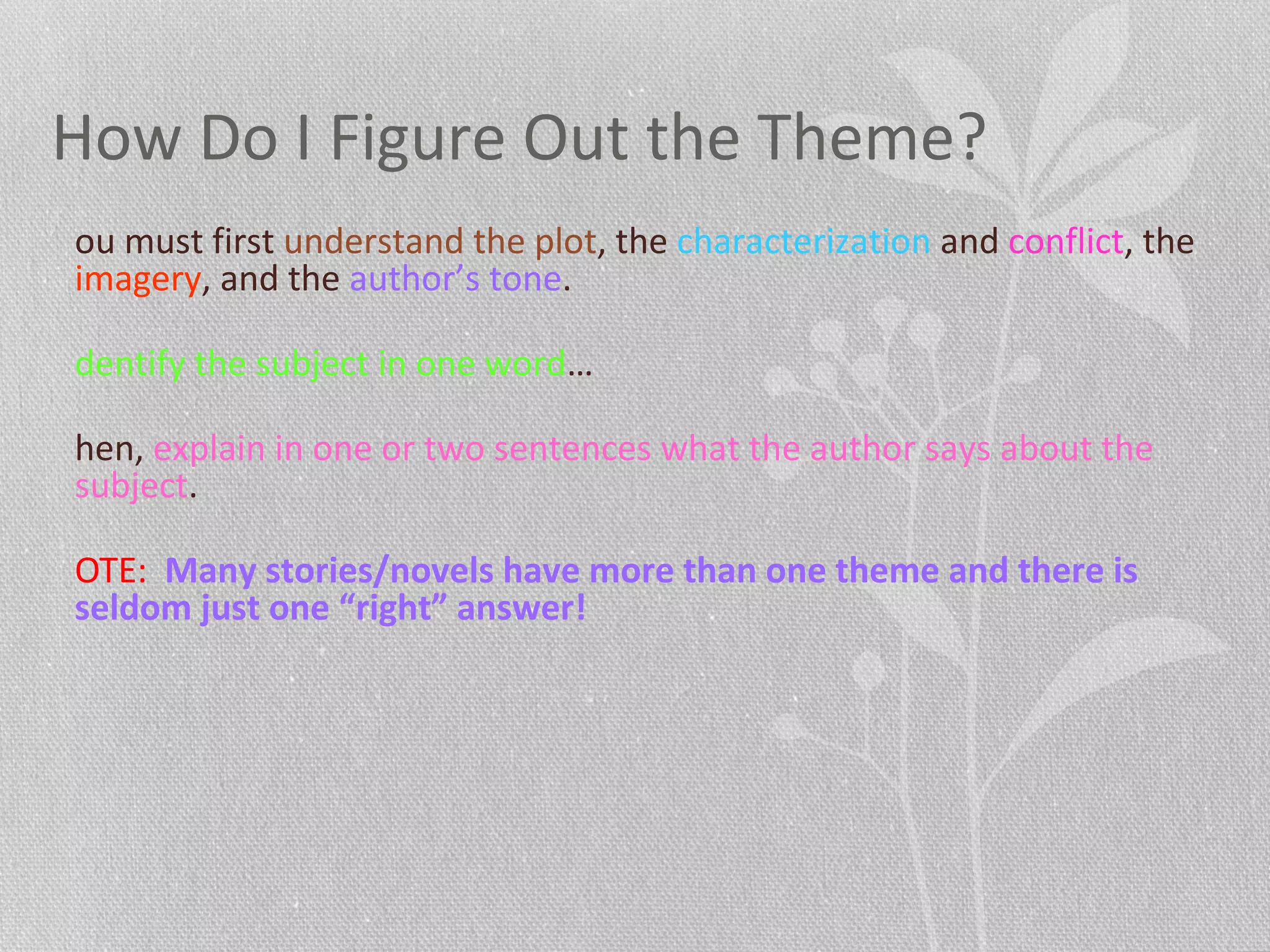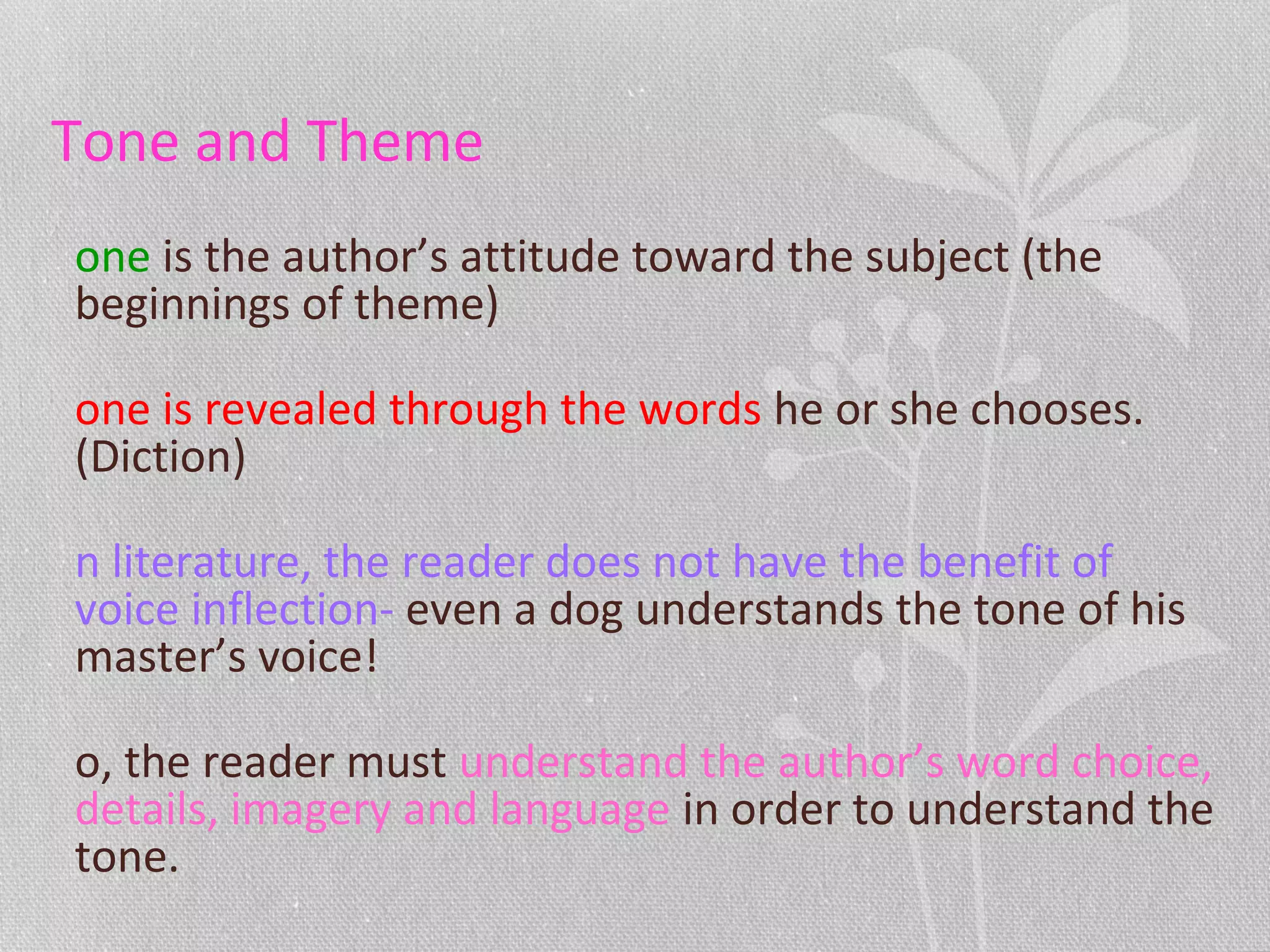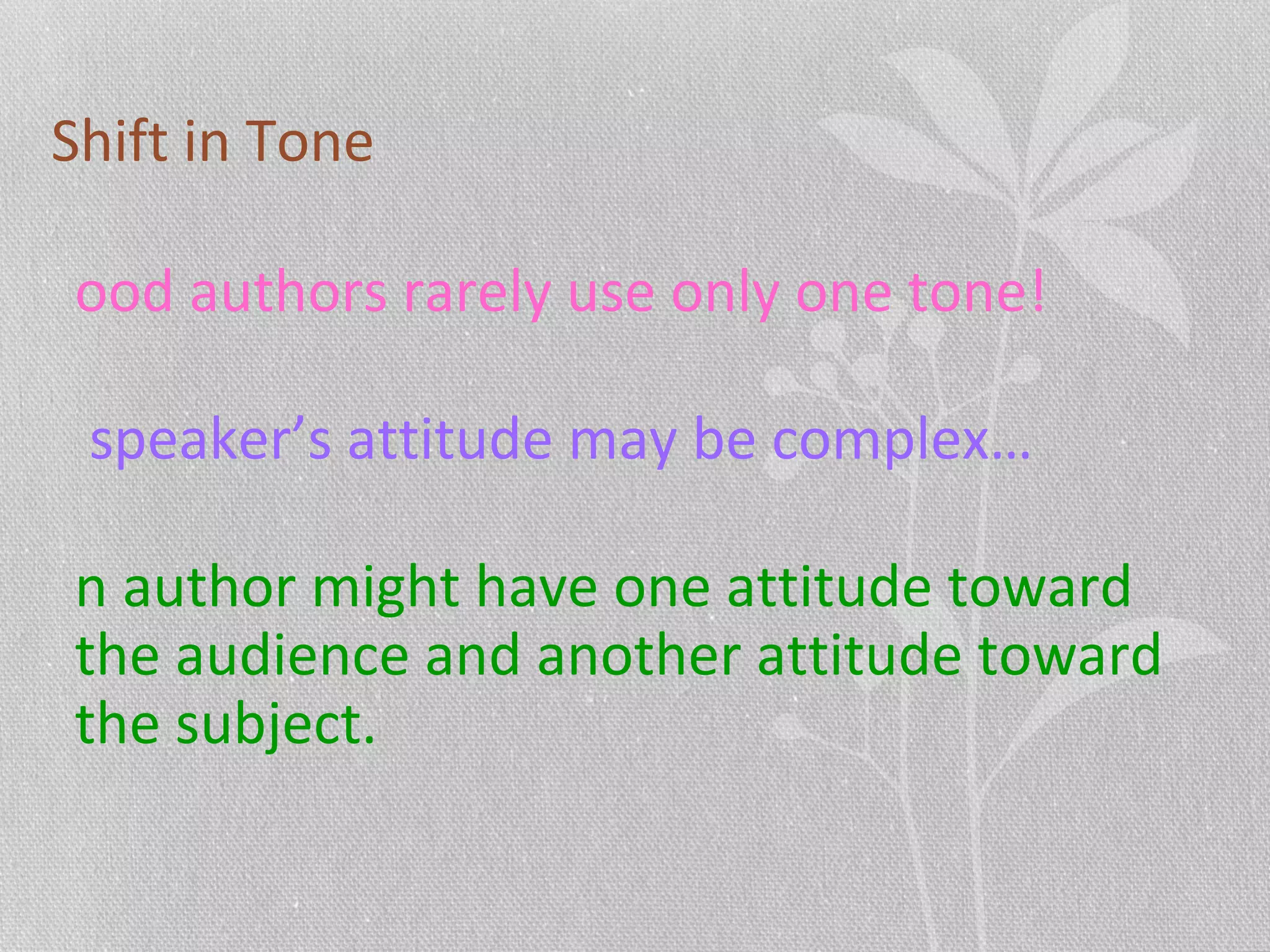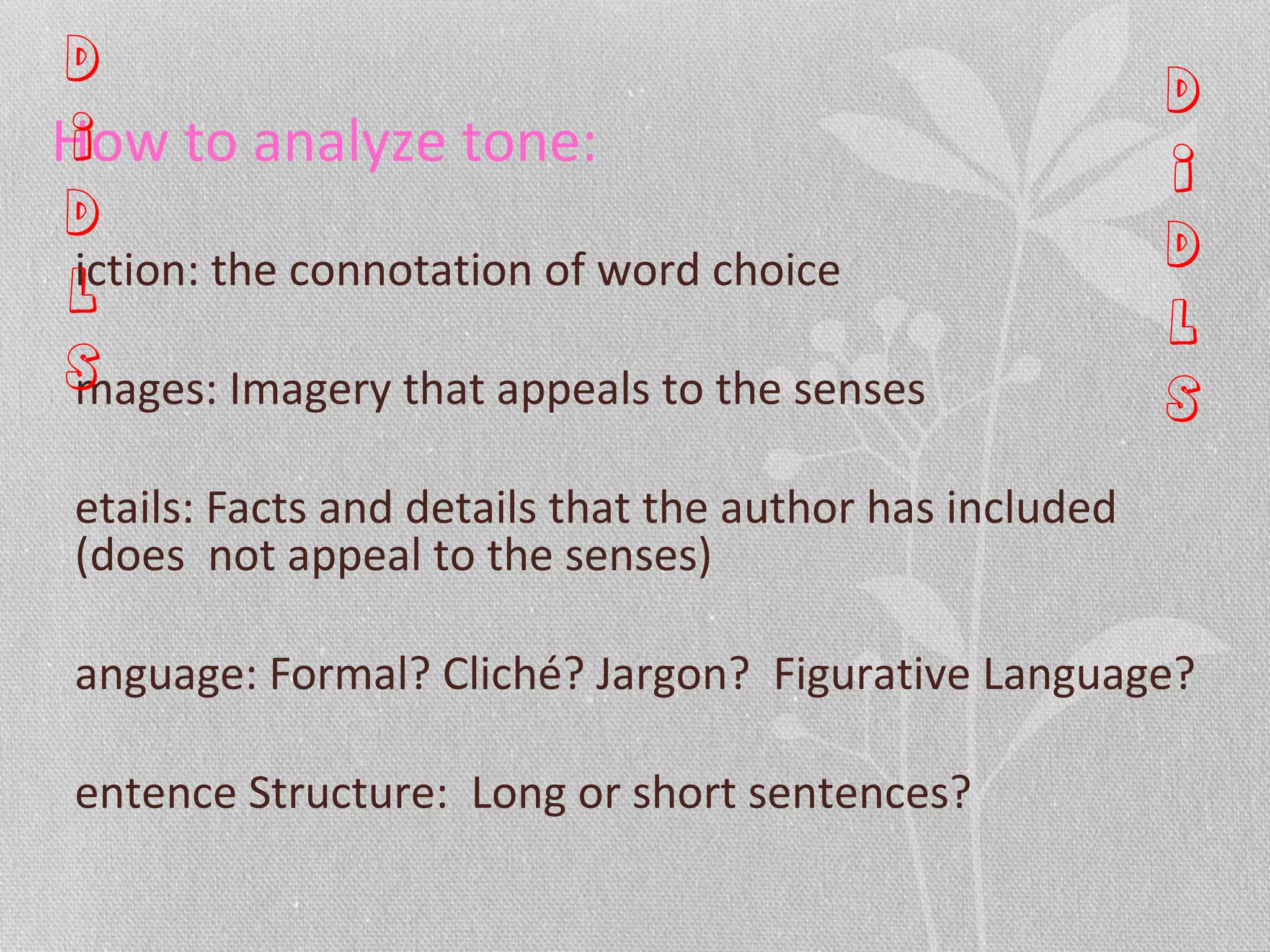This document outlines the SIFT method for literary analysis. SIFT stands for Symbols, Imagery, Figures of Speech, Tone and Theme. It provides guidance on identifying each element:
- Symbols: Objects or characters that represent something abstract
- Imagery: Descriptions that appeal to the senses
- Figures of Speech: Devices like simile, metaphor, personification that form images
- Tone: The author's attitude conveyed through word choice, details and language
- Theme: The central idea or message about human nature revealed through plot events and characters.

